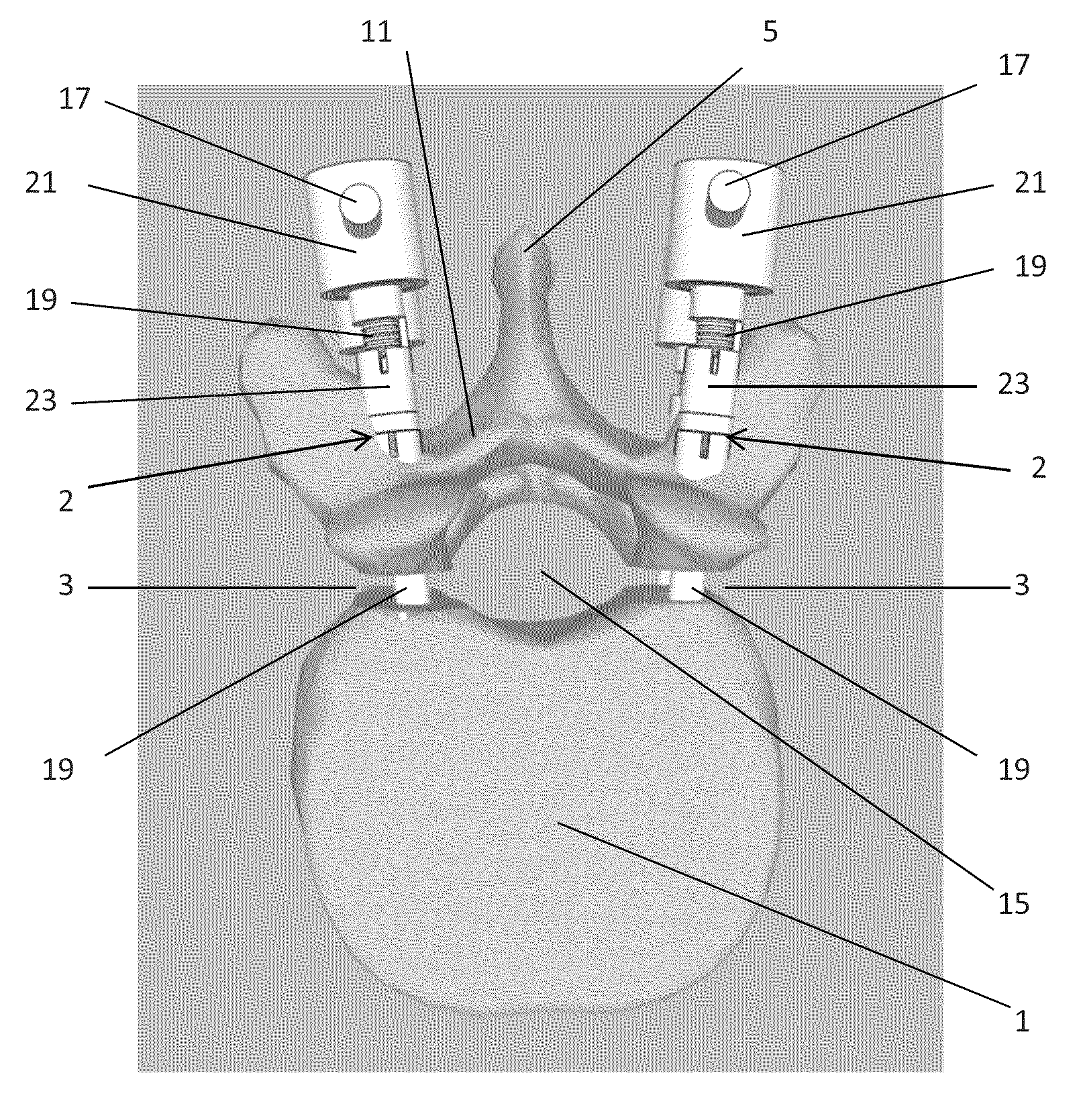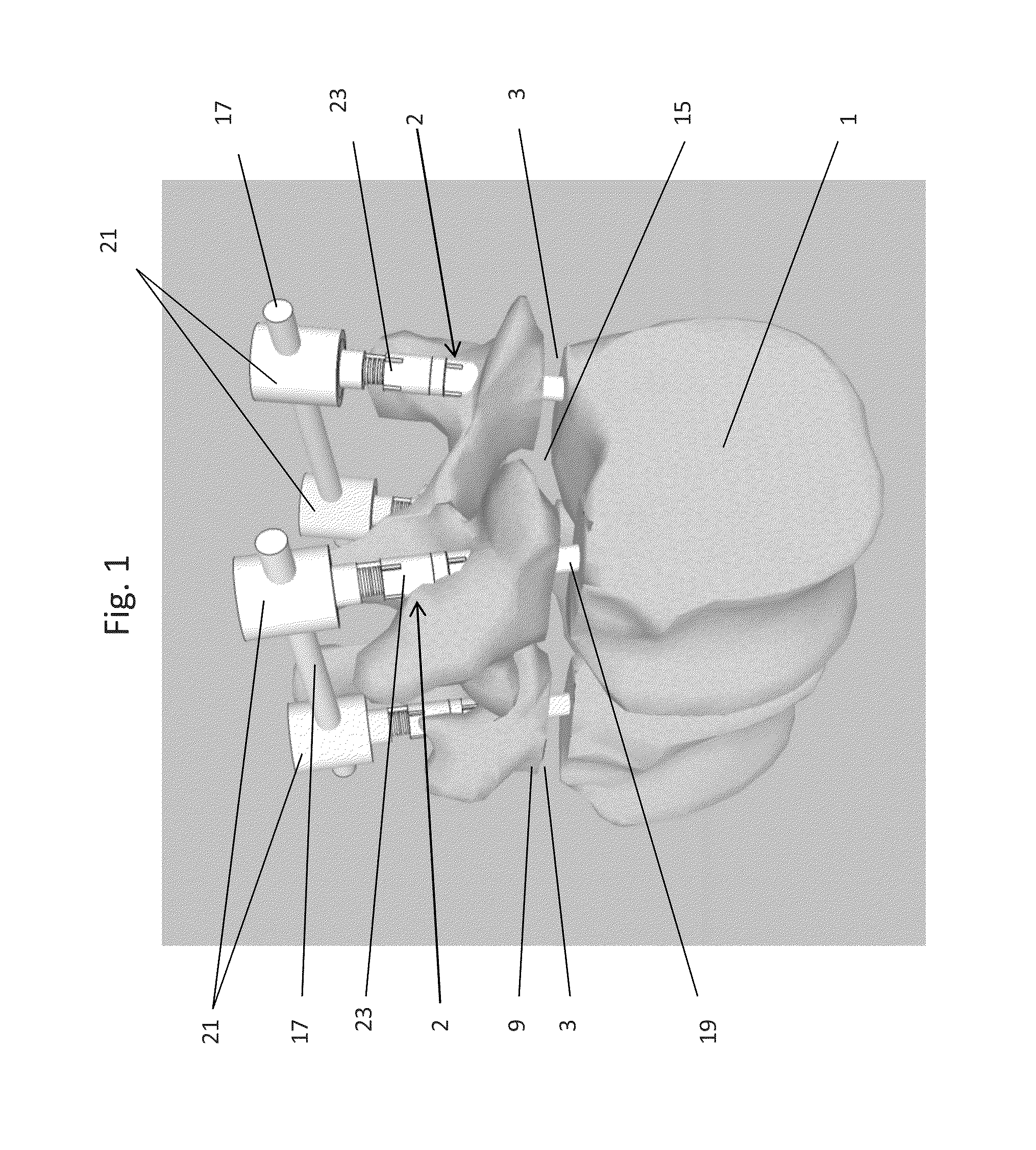Device and method for expanding the spinal canal with spinal column stabilization and spinal deformity correction
a technology of spinal column stabilization and spinal canal, applied in the field of spinal surgery, can solve the problems of spinal nerves, symptoms of leg or back pain, walking problems, and current techniques for correcting these deformities are either marginally effective or highly invasive, and achieve the effect of lengthening the spinal pedicl
- Summary
- Abstract
- Description
- Claims
- Application Information
AI Technical Summary
Benefits of technology
Problems solved by technology
Method used
Image
Examples
Embodiment Construction
[0036]Referring now to the figures, where like numerals indicate like elements, there is shown in FIG. 1 a perspective view of a pedicle lengthening and stabilization construct, in accordance with one embodiment of the present invention, implanted within two adjacent vertebrae that have undergone pedicle lengthening. Pedicle lengthening implants 2 can be seen implanted into the pedicles 9 of the two adjacent vertebrae.
[0037]The pedicle lengthening implants 2 have been extended to create a gap 3 at the base of the pedicle 9 and thus expand the dimensions of the spinal canal 15. Techniques and implants (devices) for pedicle lengthening have been described in detail in U.S. Pat. No. 7,166,107, issued Jan. 23, 2007, entitled “Percutaneous Technique and Implant for Expanding the Spinal Canal;” and in U.S. application Ser. No. 12 / 624,946, filed Nov. 24, 2009, (US Publication No. 2010 / 0168751), entitled “Method, Implant & Instruments for Percutaneous Expansion of the Spinal Canal.” U.S. Pa...
PUM
 Login to View More
Login to View More Abstract
Description
Claims
Application Information
 Login to View More
Login to View More - R&D
- Intellectual Property
- Life Sciences
- Materials
- Tech Scout
- Unparalleled Data Quality
- Higher Quality Content
- 60% Fewer Hallucinations
Browse by: Latest US Patents, China's latest patents, Technical Efficacy Thesaurus, Application Domain, Technology Topic, Popular Technical Reports.
© 2025 PatSnap. All rights reserved.Legal|Privacy policy|Modern Slavery Act Transparency Statement|Sitemap|About US| Contact US: help@patsnap.com



